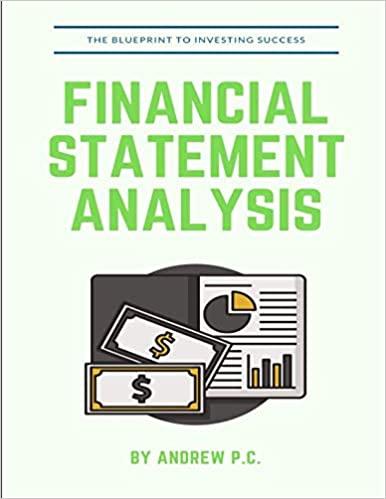Answered step by step
Verified Expert Solution
Question
1 Approved Answer
To estimate the optimal mix of debt and equity for your firm and to evaluate the effect on firm value of moving to that mix.
To estimate the optimal mix of debt and equity for your firm and to evaluate the effect on
firm value of moving to that mix.
KEY STEPS
Based on the cost of capital approach, estimate the optimal debt ratio for the firm and
examine how sensitive it is to your operating income assumptions.
Validate your conclusions using other approaches adjusted present value method to
estimating the optimal mix.
Bringing in reasonable constraints into the decision process, estimate the optimal debt
ratio that you would recommend for the firm.
Evaluate how much your firm has borrowed, relative to other firms in the sector and in
the market.
FRAMEWORK FOR ANALYSIS
INTRINSIC APPROACHES
a As a starting point, estimate the current debt ratio for the firm and the cost of capital at
that debt ratio.
b Estimate your costs of debt, equity and capital as your debt ratio changes in the firm. That
will require you to estimate the beta and synthetic rating at each debt ratio.
c Examine how the optimal debt ratio changes, as you change key inputs into the analysis
both micro and macro keeping in mind the volatility of earnings in your companys
history and the sector that it operates in You may also want to incorporate indirect
bankruptcy costs into your assessments.
d Use the adjusted present value approach, where you consider the tax benefits from
debt and weigh them off against expected bankruptcy costs. Compare the optimal debt
ratio that you get, using this approach, to the one that you get with the cost of capital
approach.
e Make a judgment on your optimal debt ratio.
In making this judgment, you can start with your cost of capital assessments but
you should also consider whether the payoff from moving to the optimal justifies
the risk in doing so
Also, estimate the value of the business and the per share value, if you move to
the optimal.
DETAILED GUIDANCE ON HOW TO COMPLETE THE INTRINSIC APPROACH
COST OF CAPITAL APPROACH
Estimate the firms levered beta based on its current capital structure by regressing the
firms weekly returns against the markets weekly returns.
Compute the unlevered beta.
Compute the levered beta at different DE ratios.
Compute the cost of equity at each DE ratios using levered beta in step
Estimate the cost of debt at different DE ratios:
a Compute the Times Interest Earned TIE or interest coverage ratio for each level
of debt. Use the synthetic bond rating to determine the default spread and hence
the interest rates based on the TIE ratio. This may require more than one iteration
as the interest expense depends on the spread and the spread is dependent on the
TIE ratio. See power point on the cost of capital Damodaran The risk premium
for Jamaica is
b Interest expense is tax deductible only up to the amount of the EBIT.
i Compute the maximum tax benefit: EBIT x Tax Rate
ii Adjusted tax rate
P a g e
c Compute the aftertax cost of debt using interest rates computed in a and tax rate
computed in b
Compute the firms cost of capital at different debt levels using cost of equity from step
and aftertax cost of debt in step
Compute the current market value of the firm MVE: MVE market value of the equity
market value of the debt use book value of debt if market value is not available
Assuming the constant growth model and the firms current cost of capital, compute the
implied growth rate in FCF
Assume that all the increase in value is captured by the shareholders, what is the increase
in share price if the firm moves to the optimal debt level by recapitalization?
RELATIVE ANALYSIS
a Relative to the industry to which this firm belongs, evaluate whether your firm has too
much or too little in debt. Do a sector regression, if necessary, to make this judgment.
b Relative to the market, evaluate whether your firm has too much or too little in debt. Do a
sector regression, if necessary, to make this judgment.
SENSITIVITY ANALYSIS OPTIMAL DEBT RATIO IS A FUNCTION OF INTERNAL AND
EXTERNAL FACTORS.
How will the optimal debt ratio change if tax rate is
How will the optimal debt ratio change if market interest rates increased by
basis points
CONCLUSIONS AND RECOMMENDATIONS
Based on your computations and your sensitivity analyses recommend the optimal capital
structure one that maximizes firm value or minimizes cost of capital
Justify your recommendations.
Step by Step Solution
There are 3 Steps involved in it
Step: 1

Get Instant Access to Expert-Tailored Solutions
See step-by-step solutions with expert insights and AI powered tools for academic success
Step: 2

Step: 3

Ace Your Homework with AI
Get the answers you need in no time with our AI-driven, step-by-step assistance
Get Started


